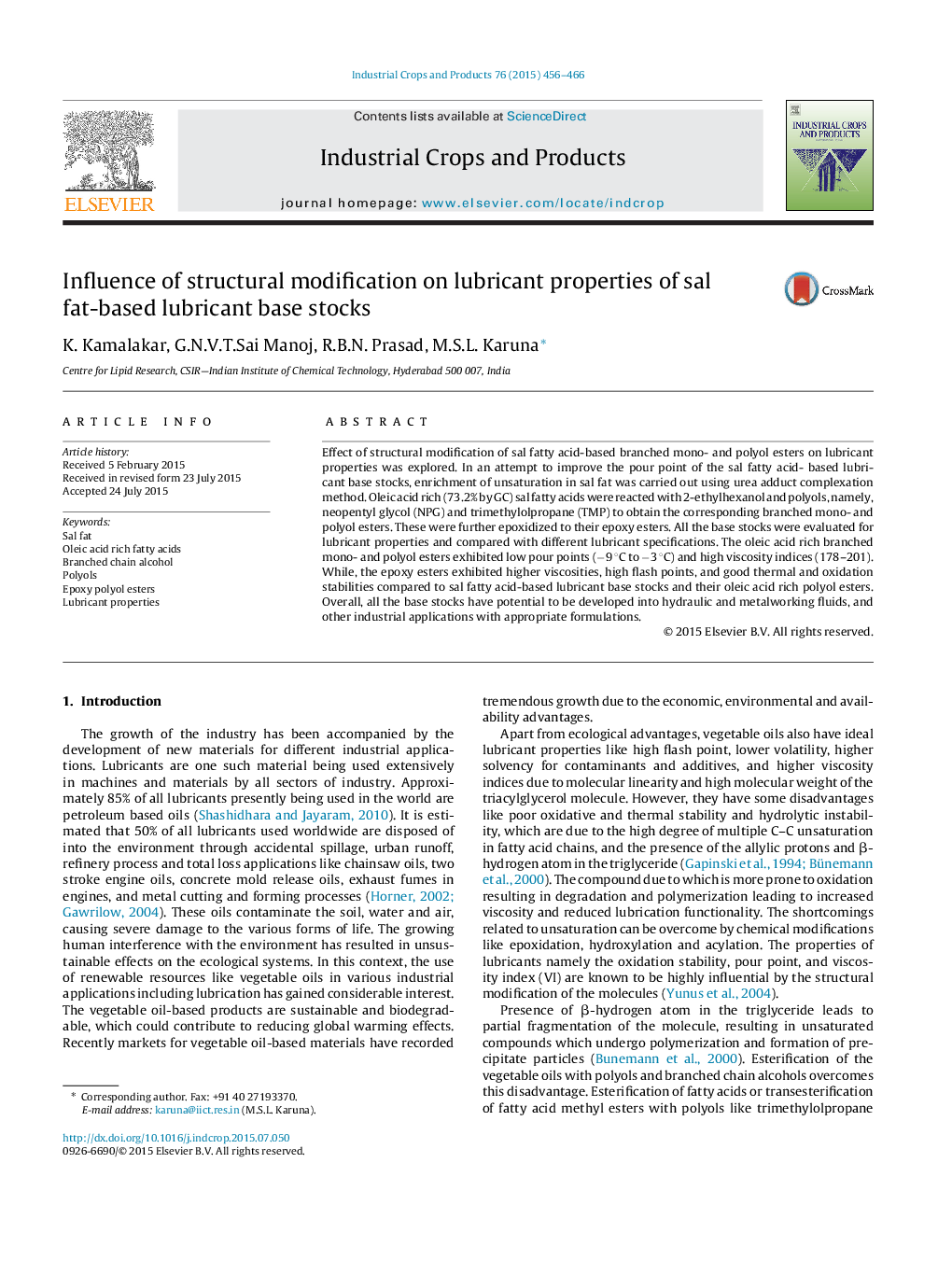| Article ID | Journal | Published Year | Pages | File Type |
|---|---|---|---|---|
| 6375586 | Industrial Crops and Products | 2015 | 11 Pages |
Abstract
Effect of structural modification of sal fatty acid-based branched mono- and polyol esters on lubricant properties was explored. In an attempt to improve the pour point of the sal fatty acid- based lubricant base stocks, enrichment of unsaturation in sal fat was carried out using urea adduct complexation method. Oleic acid rich (73.2% by GC) sal fatty acids were reacted with 2-ethylhexanol and polyols, namely, neopentyl glycol (NPG) and trimethylolpropane (TMP) to obtain the corresponding branched mono- and polyol esters. These were further epoxidized to their epoxy esters. All the base stocks were evaluated for lubricant properties and compared with different lubricant specifications. The oleic acid rich branched mono- and polyol esters exhibited low pour points (â9 °C to â3 °C) and high viscosity indices (178-201). While, the epoxy esters exhibited higher viscosities, high flash points, and good thermal and oxidation stabilities compared to sal fatty acid-based lubricant base stocks and their oleic acid rich polyol esters. Overall, all the base stocks have potential to be developed into hydraulic and metalworking fluids, and other industrial applications with appropriate formulations.
Keywords
Related Topics
Life Sciences
Agricultural and Biological Sciences
Agronomy and Crop Science
Authors
K. Kamalakar, G.N.V.T.Sai Manoj, R.B.N. Prasad, M.S.L. Karuna,
